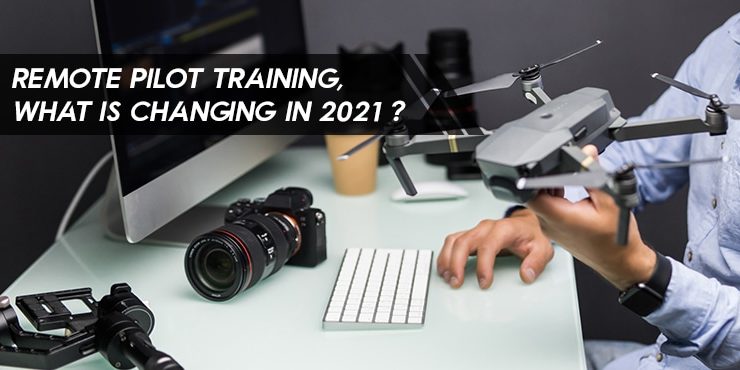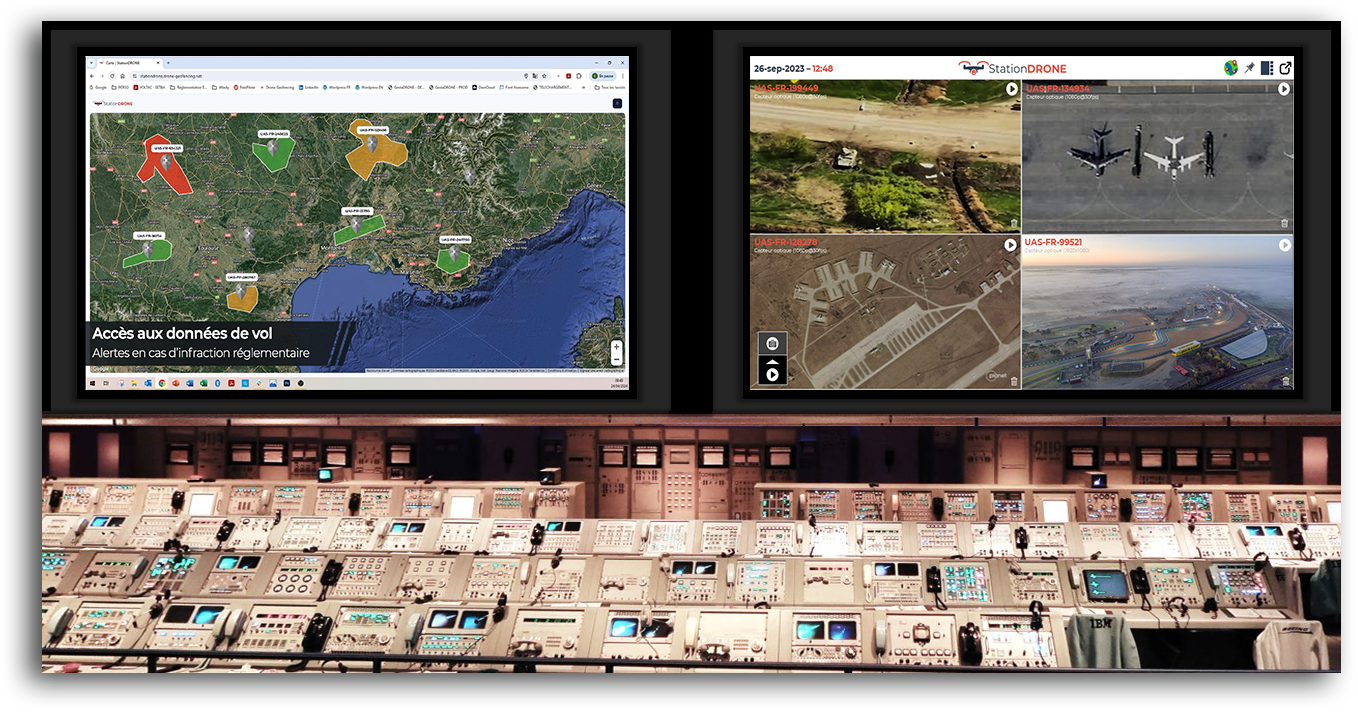Remote pilot training, what is changing in 2021
In 2021, drone regulations have changed. The drone registration rules for any European remote pilot, altitudes and flight scenarios have evolved since January 1, 2021. Reasons why drone remote pilot training has also evolved since that date.
Reminder of the regulations concerning the training of drone remote pilots
Until now, drone remote pilots (with the exception of captive aerostats remote pilots) had to hold a remote pilot theoretical aptitude certificate (CATT) issued upon successful completion of the theoretical drone training exam organized by the DGAC (Directorate General of Civil Aviation).
As a reminder, we have attached in the following link the old theoretical drone pilot training program associated with this exam.
As a reminder, the validity of the CATT was not limited in time. However, it was up to the drone operator to periodically assess the need to provide for an update of the theoretical knowledge of the remote pilot (particularly with regard to changes in regulations, or his ability to read aeronautical information).
– The regulations applicable to remotely piloted aircraft;
– Procedures in the operator’s specific activity manual;
– Technical and operating principles necessary for piloting the operator’s aircraft.In addition, to become a permanent drone remote pilot, the latter had to hold a certificate of theoretical flight training followed by a training organization mentioning the scenario (s) for which the training was delivered.
So what is changing in 2021 for drone remote pilot training ?
The DGAC carried out a review of the base of questions for the ULM theoretical certification exam for the ability to perform drone remote pilot functions (CATT) with a view to making it compliant with European regulations 2021.
This is a “minimum” compliance aimed at removing or correcting questions that have become obsolete or incorrect, without introducing new questions on the European regulation itself.
With the entry into application of European regulations, the purpose of the CATT remote pilot theoretical aptitude certificate changes.
Under national regulations, the CATT allowed flying in the context of specific activities. In the European context, the CATT allows to fly according to the national standard scenarios in the Specific category.
By equivalence, the CATT also allows to fly in open category, in particular in OPEN A2, but no question of the exam will relate to the Open category. The terminology has been adapted: “unmanned aircraft on board” replaces “remotely piloted aircraft”, “in direct sight” replaces “in sight”, “operations manual” replaces “special activities manual”, but without this changes the meaning of questions.
The questions on the CATT certification exam that dealt with regulation were modified as follows (without addressing the substance of the regulation) :
– Deletion of any reference to specific activities, to the decrees of December 17, 2015 and to scenario S-4.
– Exclusive focus on national standard scenarios in the Specific category: no question on model aircraft, the Open category, European standard scenarios, the LUC, or operating authorizations.
– The reference text is the decree of 3 December 2020 relating to the definition of national standard scenarios, which identically reproduces the requirements applicable to scenarios S-1, S-2, S-3 which appeared in the decree aircraft of December 17, 2015.
The only substantive changes, following the new 2021 regulations, are as follows :
Article 7 of the Espace decree of December 3, 2020: lowering of the maximum height of the national standard scenarios from 150m to 120m, and to 15m above an obstacle of more than 105m.
Article 6 of the Space decree concerning the overflight of the SETBA and VOLTAC zones: removal of the height limit of 50m and replacement by an obligation to notify for UAS with a mass greater than 900 grams.
You want to become a professional pilot or fly a drone ? Find out about your drone pilot training obligations on the Fox AlphaTango site of the DGAC. For any professional drone piloting, you must have completed compulsory practical and theoretical training at an approved training organization or certified training center, have passed your exam at the DGAC or obtained your professional drone pilot license, with certificate practical training in remote piloting and have registered your drone on the DGAC site.
Moreover, any drone pilot must register on the DGAC website, whether it is the use of a recreational drone for aerial photography such as DJI Mavic Air or DJI Phantom 4 or not. All drone owners in France must register on the AlphaTango site, follow the small training, answer the qcm and register their drone.
GESTADRONE software then allows you to make all your declarations of specific civil drone activities online : request for an overflight declaration, to fly your civilian drone, depending on your flight scenario, in a defined airspace, in a populated area or not, to take aerial shots, to perform each take-off and landing in complete safety.
You are a drone operator and manage several UAS aircraft or drones, the GESTADRONE drone management software is made to simplify your declaration of professional activity or management of a fleet of devices and remote pilots. You manage each device but also each aircraft pilot, his level of competence, this theoretical knowledge, his certifications, knowing when he must undergo a complete or additional training, obtain a training certificate and manage his flight missions. Contact us for more information.




